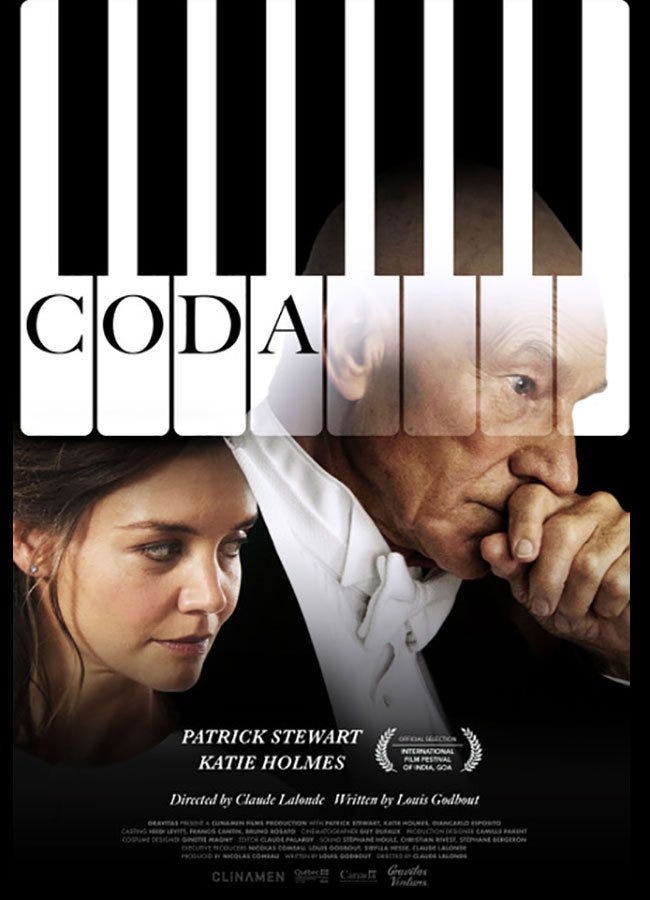


With CODA’s big Oscar win and the increase in on-screen deaf representation, more people will likely be wanting to learn ASL. According to Matlin, it helped bond the cast and crew. She said that a lot of the crew members were CODAs and they would all be signing during breaks. In an interview with Entertainment Weekly, Matlin spoke about how a lot of ASL was spoken behind the scenes as well. She also shared that she doesn’t consider herself fluent in it but continuing to learn. Jones told Glamour that she studied it for nine months while also working.

She also shared with Filmmaker Magazine that she learned ASL for the film, and Emilia Jones did as well. It helped her learn plenty of dirty words in ASL. In an interview with Deadline, she shared that she let Kotsur “riff” some of his dialogue because of his distinct signing style. She collaborated with ASL experts Alexandria Wailes and Anne Tomasetti to flesh out the scenes and dialogue. She didn’t want to do what many other films did by having hearing characters translate what the deaf characters were saying in the film. In the Filmmaker Magazine interview, director Sian Heder spoke about the importance of having ASL in almost every scene. In an interview with Deadline, Marlee Matlin shared that 40 percent of the dialogue in the film uses ASL (American Sign Language). (Image credit: AppleTV+) 40 Percent Of The Dialogue Is In ASL There were endless opportunities (that may not have been fully realized in the French film) to get into who these characters are and build their journeys accordingly. From there, we could all collaboratively explore ‘Deaf culture’ as a very specific culture within the world of our film. I was also interested in creating three-dimensional deaf characters and, more importantly, casting authentically deaf actors. She told Filmmaker Magazine this about her intentions for the film: The setting wasn’t the only thing Heder changed from the original movie. French financiers allowed CODA to be made independently.

The Massachusetts setting really helps CODA distinguish itself from similar coming-of-age stories.Įventually, Patrick Wachsberger, the producer behind the remake of La Famille Bélier, left Lionsgate and took the film with him. Heder was the one who suggested that the film take place in Gloucester, Massachusetts because she grew up close to that area and was somewhat familiar with the fisherman life there. The film basically had the same premise as CODA, but with some key differences, such as the deaf parents being played by hearing actors.ĬODA director Sian Heder told Filmmaker Magazine that the film was initially being made by Lionsgate and they “weren’t looking for a 1:1 remake of the French film, but rather for someone to come in with their own vision of what an American version could be.” (Image credit: AppleTV+) It’s Based On A French FilmĬODA is based on a 2014 French comedy called La Famille Bélier. Durant also once shared the screen with Matlin as they both appeared on Switched at Birth. He even shared the stage with his CODA co-star Daniel Durant in the Deaf West 2012 production of Cyrano (via Decider). To those not in the Deaf acting community, Kotsur may have seemed like a newcomer when he appeared in CODA, but he has been doing theater work for over 30 years and appeared in television and film long before CODA. Kotsur became the second deaf actor to win an Academy Award for acting in 2022. It would take over 35 years before another deaf actor would even be nominated and win. She also still holds the title for youngest actress to ever win the Academy Award at 21. Marlee Matlin became the first deaf person to win an Academy Award for acting in 1986 for her lead role in Children of a Lesser God. V" Villalobos, Ruby’s choir teacher and mentor. Eugenio Derbez rounds out the core cast as Bernardo "Mr. Troy Kotsur plays her father Frank, and Daniel Durant plays her brother Leo. Marlee Matlin plays Ruby’s mother Jackie. (Image credit: AppleTV+) CODA Stars The Only Two Deaf Actors To Win Academy Awards


 0 kommentar(er)
0 kommentar(er)
